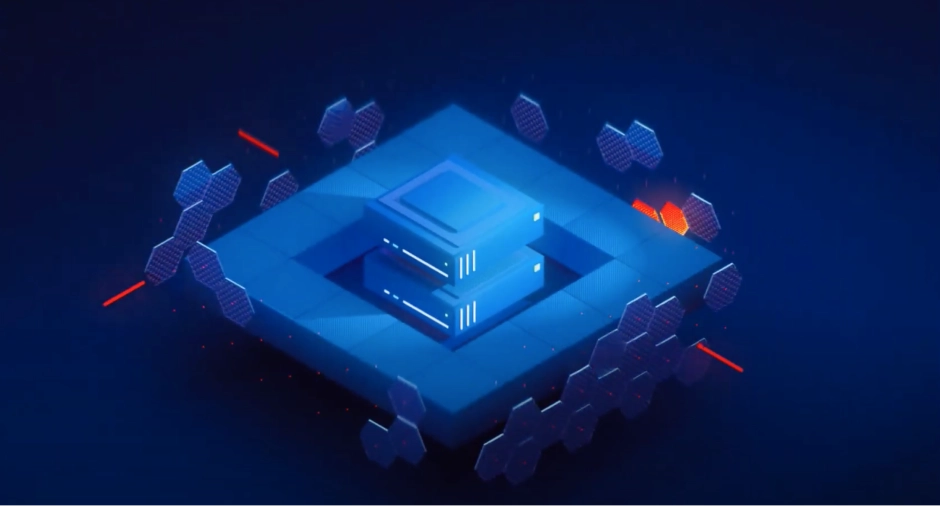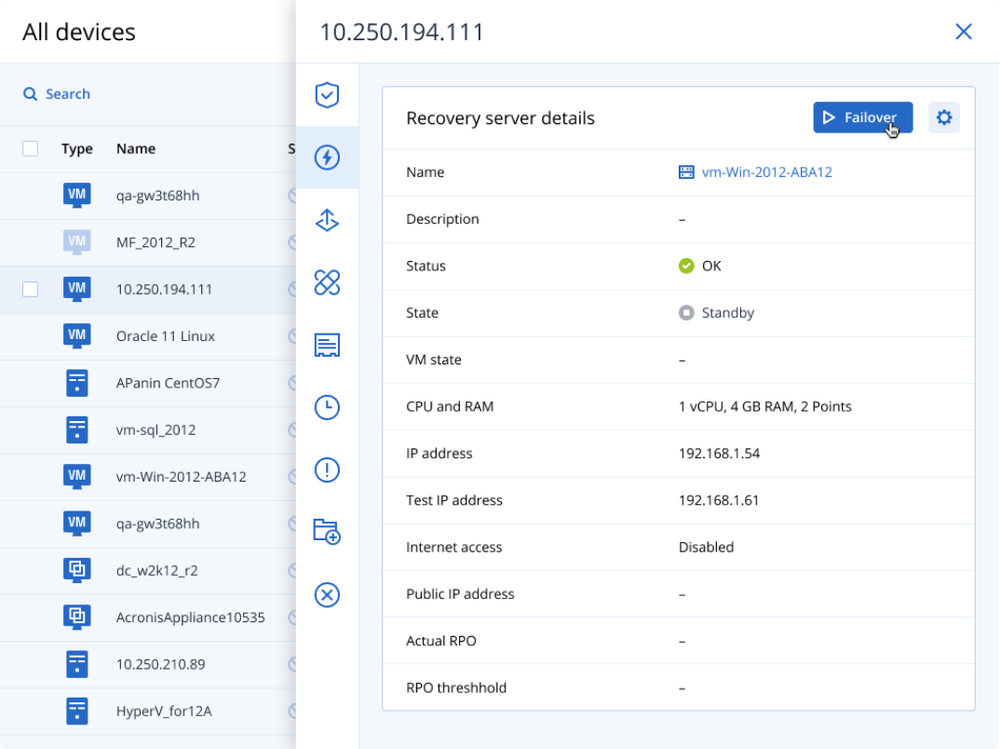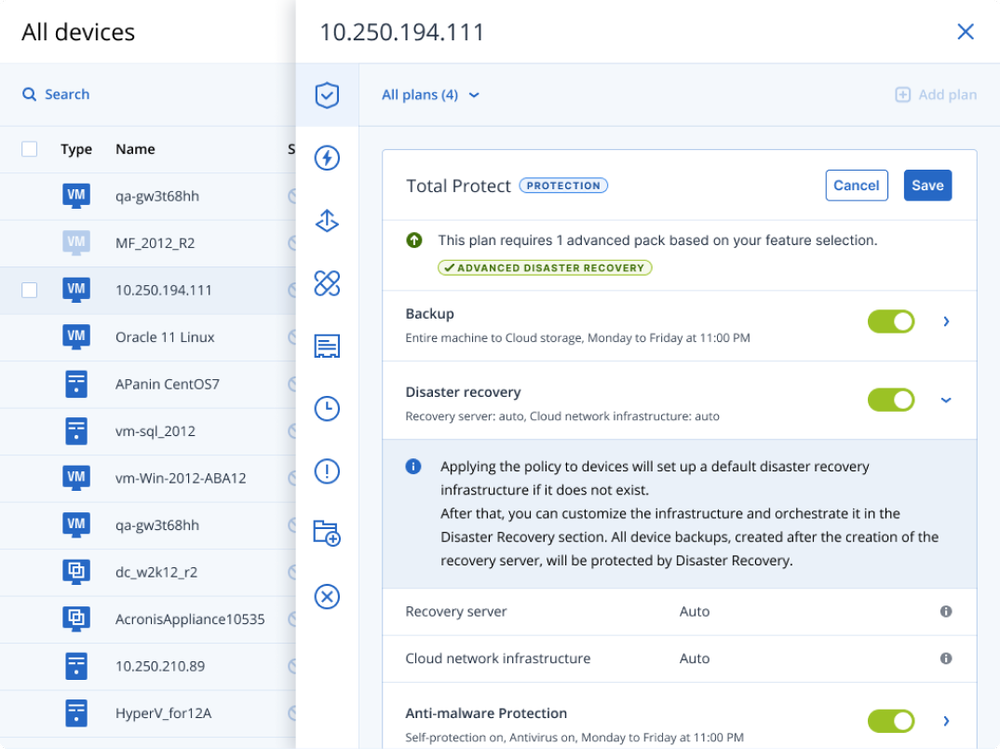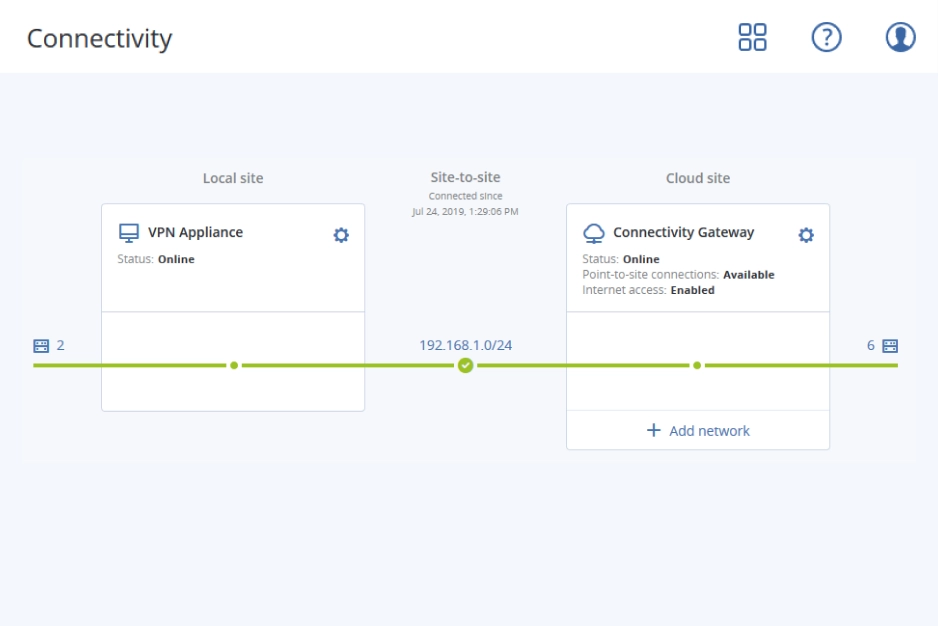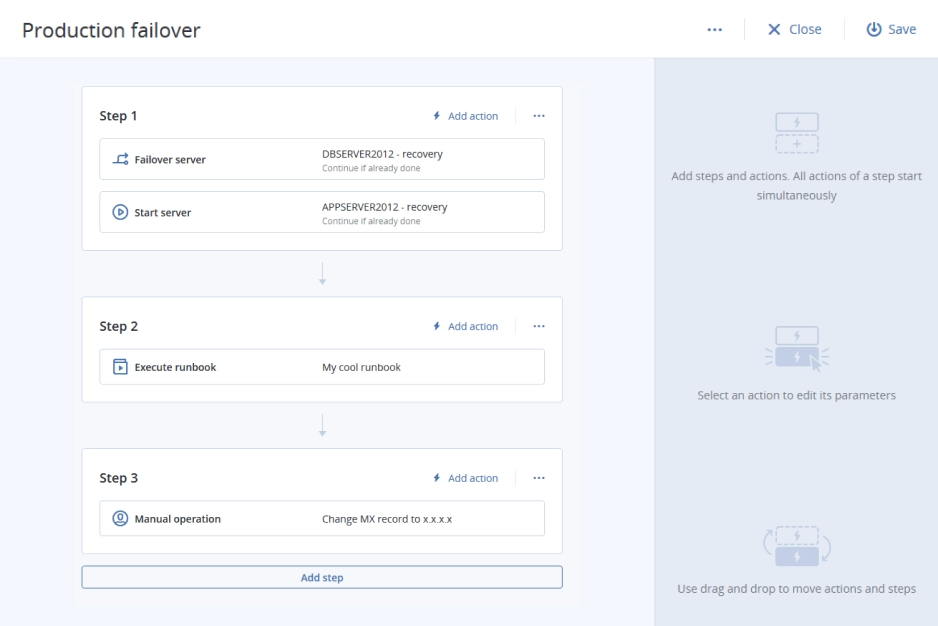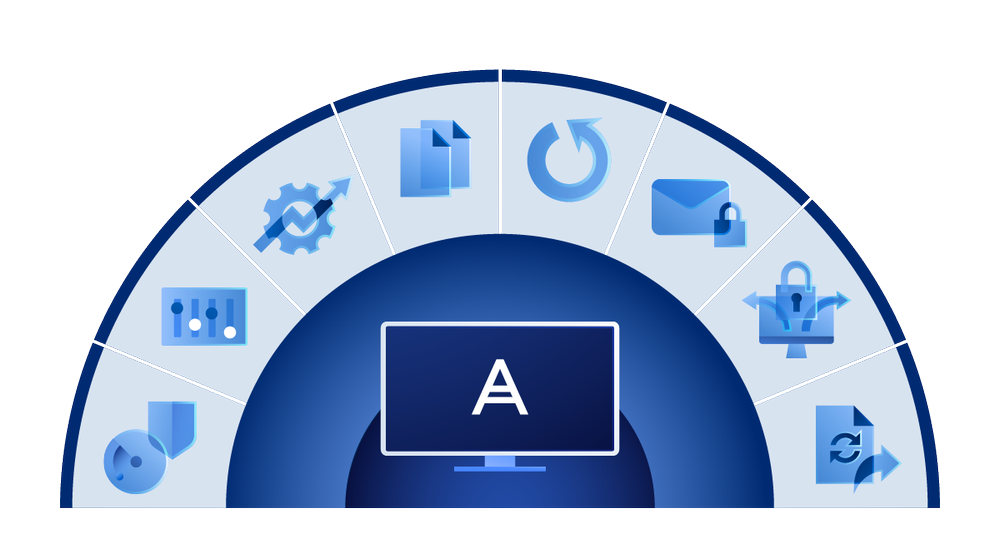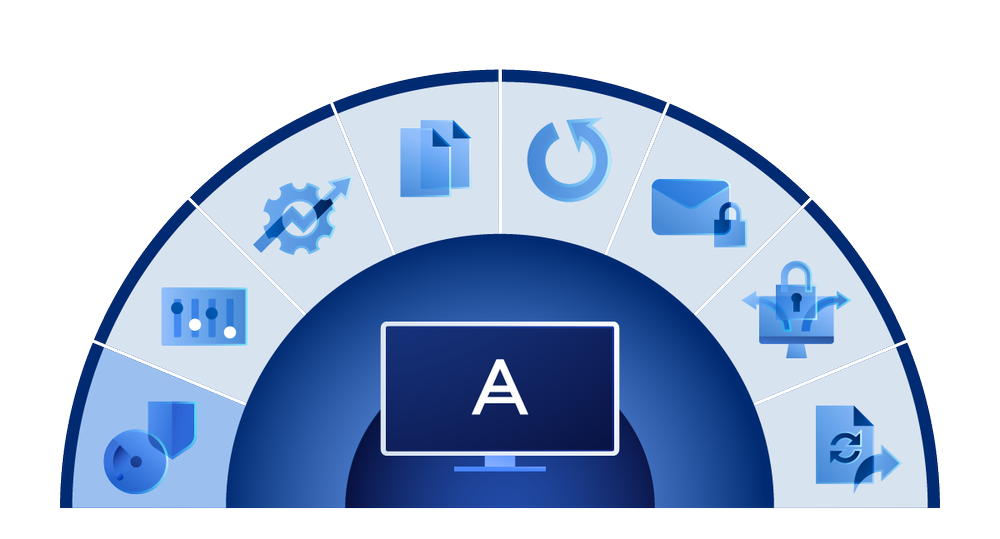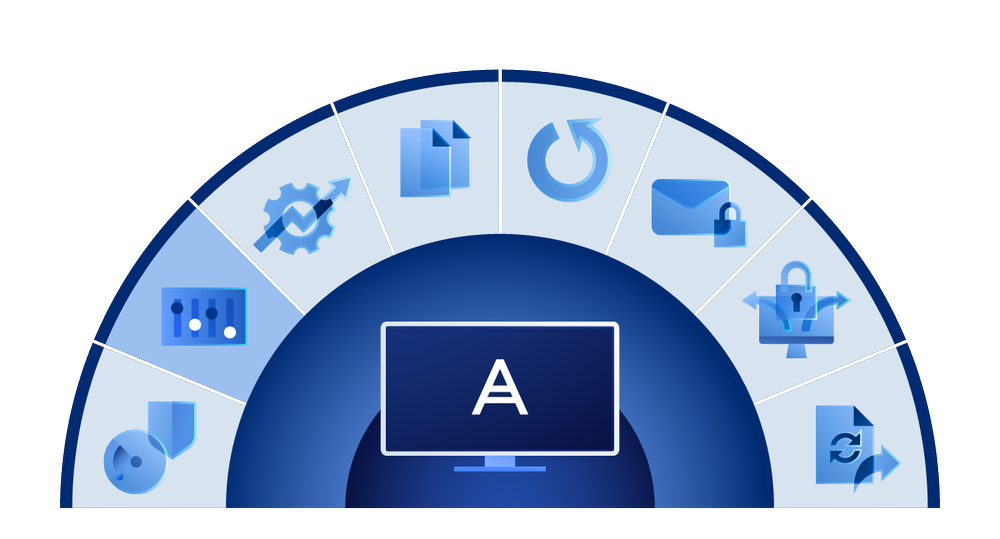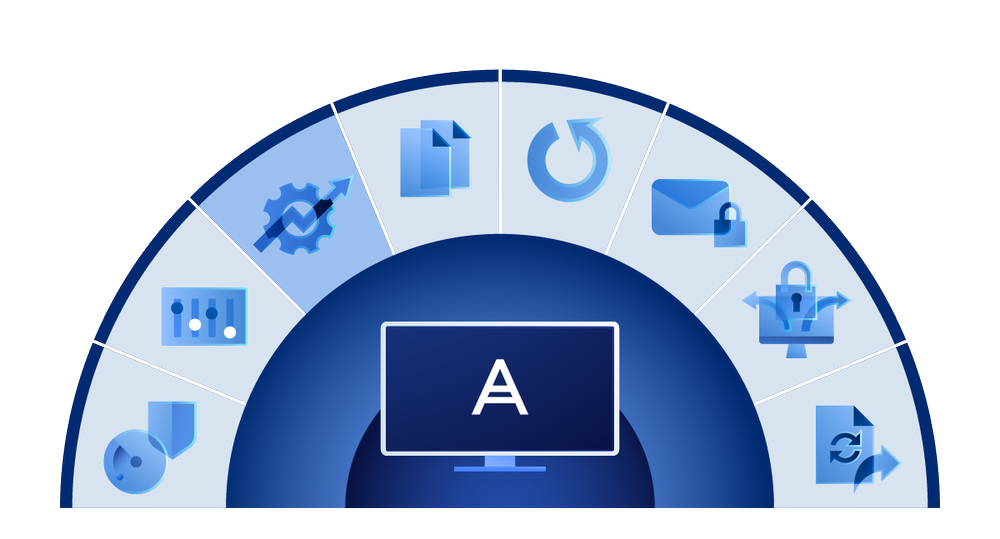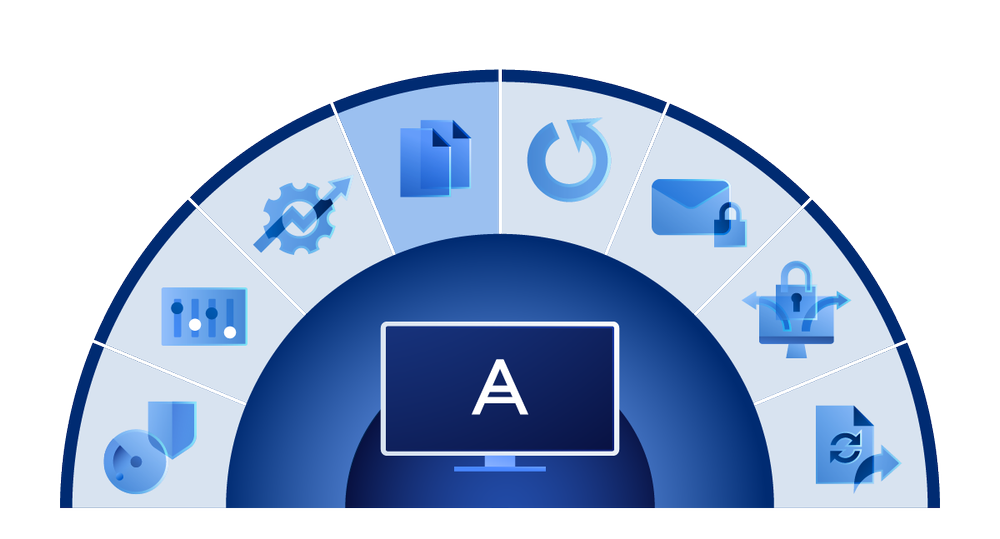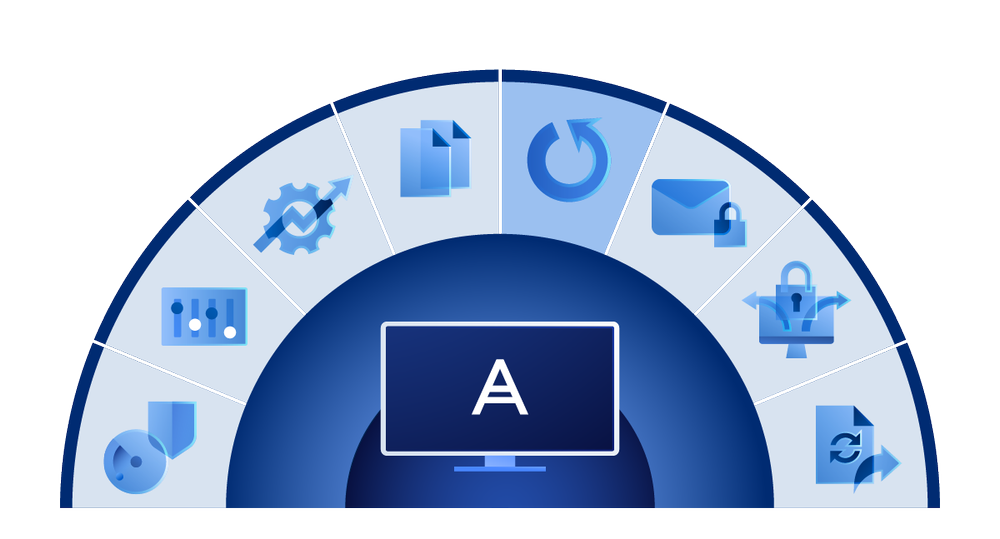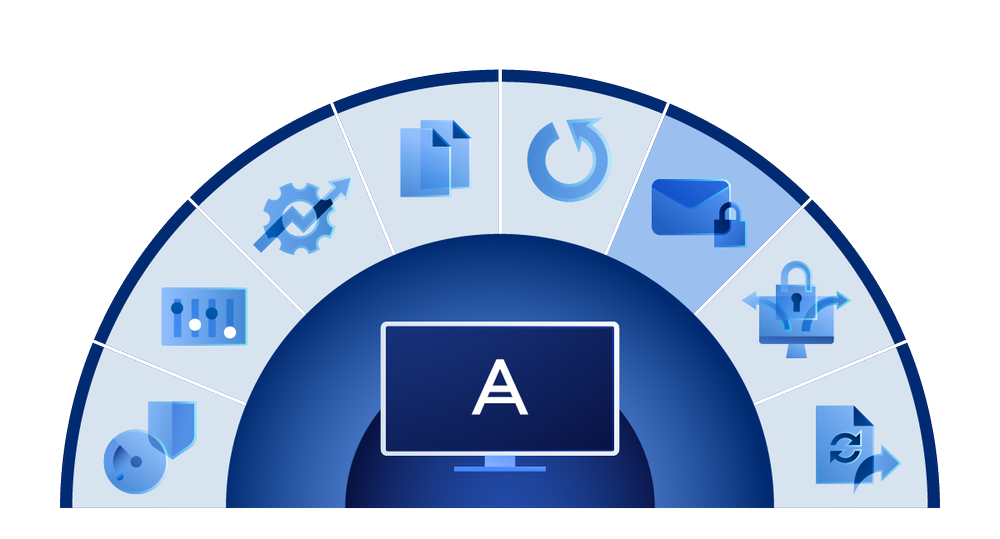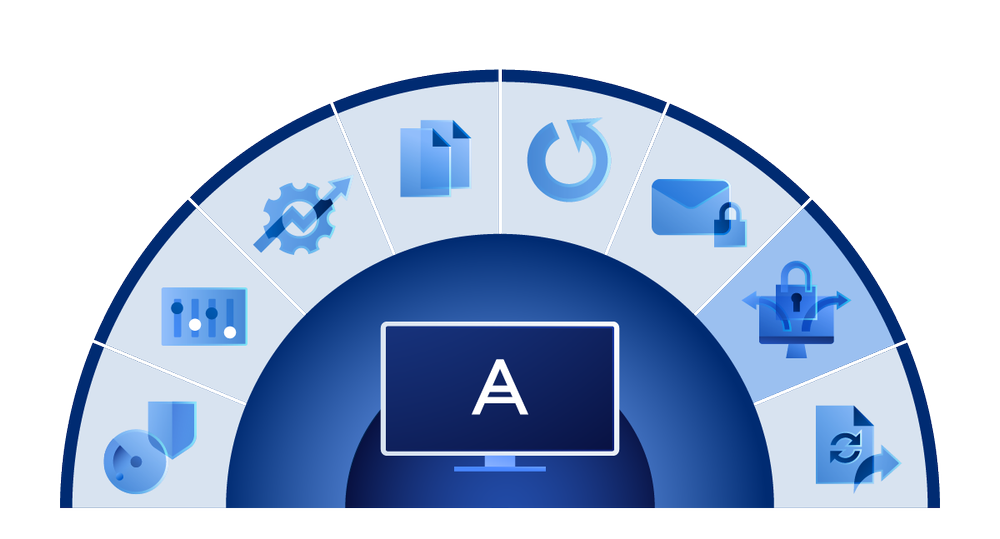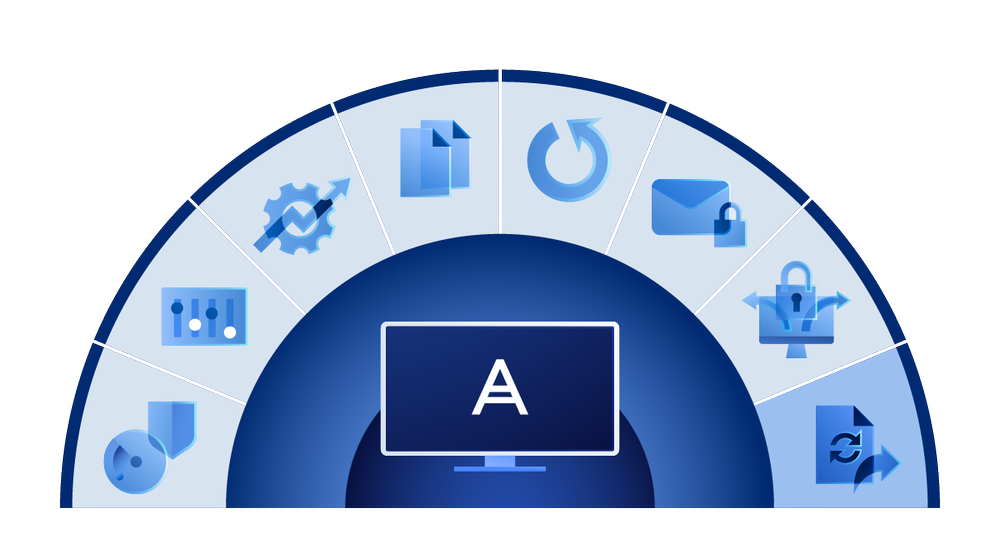- Simplify disaster recoveryEnable disaster recovery in a few clicks — without any capital investments needed upfront.
- Grow recurring revenueDeliver complete protection against today’s threats — while increasing your monthly recurring revenue.
- Ensure malware-free recoveriesPrevent reinfection by failing over to a malware-free recovery point (available with Advanced Security).
Businesses now face more threats than ever before. With Acronis, you can easily secure clients’ data and quickly return to a production-ready state in case of any disruption.
| File, image, and applications backup | | |
| Local recovery with Instant Restore | | |
| Test failover | | |
| Automated test failover | | |
| Cloud-only VPN connection | | |
| Production and test failover to Acronis Cloud: Ensure quick and easy automated failover of the client’s production environment | | |
| VPN-less deployment option: Connect clients’ quickly and easily with point-to-site connectivity | | |
| IPsec Multisite VPN support, L2 site-to-site open VPN: Easily support clients with multiple sites that are hosting critical workloads | | |
| Multiple templates: Set up disaster recovery plans for your clients quickly and easily | | |
| Runbooks: Simplifies and speeds up failover of multiple machines to a cloud recovery site | | |
| Custom DNS configuration: Provide flexibility by setting up custom DNS configurations | | |
On-demand trainings

Get clients running in mere minutes by spinning up IT systems in the Acronis Cloud with full site-to-site connectivity and the ability to recover them to similar or dissimilar hardware.
Upcoming events
HIPAA-compliant disaster recovery solutions for healthcare
In the fast-paced health care industry, maintaining the privacy and security of patient data is paramount. Acronis is committed to helping health care providers safeguard their critical data while ensuring complete HIPAA compliance. Trust us to keep medical applications with PHI secure, so your customers can focus on what really matters — providing excellent patient care.
Best-in-class security and encryption
Acronis Advanced Disaster Recovery comes with top-notch security features, including the ability recover your workloads from encrypted archives in Acronis Cloud. You can rest assured that your medical records and other sensitive data will remain confidential and secure.Detailed audit log and additional security measures
In line with HIPAA requirements, Acronis Advanced Disaster Recovery includes comprehensive audit trails and detailed logs, allowing you to monitor and validate all data-related activities effortlessly. Additional security measures such as multifactor authentication add extra layers of protection to your data.Failback to malware-free recovery point*
In the unfortunate event of a cyberattack, Acronis allows you to failback to a malware-free recovery point. This feature ensures that you can quickly restore your system to a clean state and reduce the impact of ransomware or other malicious activities.
[*Requires Advanced Security pack]Test failover
Being prepared for an emergency is vital. That's why we provide test failover options to help you validate your disaster recovery plans without affecting your production environment. Gain peace of mind knowing your system can withstand unexpected incidents.
Get peace of mind with Advanced Disaster Recovery
Complete protection in a single solution
Eliminate the need for multiple costly solutions and protect all workloads from a single interface.Out of the box DRaaS
Get started in three clicks with a software-only solution, without any hardware appliance installation.Zero upfront license investment
Control your costs with a flexible PAYG model, allowing for higher margins and better OPEX.
Acronis Professional Services
If your organization has a complex IT infrastructure or limited IT resources, Acronis Professional Services can assist you with the design, integration, implementation and on-going operation of your Acronis solution.
Consulting services
Leverage Acronis’ experience and shorten the time it takes to gain value from your Acronis investment.- Exclusive
Deployment services
With Acronis Deployment Services, you can be the first to market with data protection, infrastructure migration, and disaster recovery services. Audit services
Decrease maintenance costs and enjoy peace of mind knowing your customers’ data is protected in accordance with industry and Acronis best practices.Educational services
Enable your personnel to drive data protection, migration, and disaster recovery services enablement, effectively support your customers.
- Disaster recovery for physical and virtual workloadsMinimize downtime by enabling easy, scalable and efficient cloud based recovery of all popular workloads including Windows and Linux physical servers and VMs, major hypervisors, and Microsoft apps.
- Production failoverEnsure quick and easy automated failover of the client’s production environment to an offsite server running in the Acronis Disaster Recovery Storage or to a hot storage in the Acronis Cloud.
- Automated test failoverSave time and effort with a simplified, automated test failover. With the Advanced Disaster recovery pack, you can perform scheduled test failover for any server on a monthly basis, giving you the confidence that you can recover quickly and successfully.
- Site-to-site VPN connectionEnable secure VPN connection between the client’s local site and the cloud site to facilitate partial failover of tightly dependent servers on the local site. When one of the servers is recreated on the cloud site, the servers continue to communicate, ensuring minimal downtime.
- Test Disaster Recovery ReadinessPerform DR testing in an isolated environment to confirm application availability, ensure compliance, and prove DR readiness — without any impact on production systems.
- Execution monitoringGain visibility into disaster recovery orchestration with a detailed runbook-execution real-time view and execution history.
- Point-in-time recoveryPrevent data loss and avoid data corruption with granularity of control over data protection and recovery capabilities. Restore systems and data to any recoverable point in the past, instead of to the latest one.
- IPsec multisite VPN supportStrengthen security with IPSec multisite VPN support that integrates secure protocols and algorithms, so you can easily support clients with multiple sites that are hosting critical workloads with higher requirements for security, compliance and bandwidth.
- Custom DNS configurationCreate custom DNS configurations for disaster recovery cloud services in the Acronis cloud. This enables you to easily adjust DNS settings for your clients – making it even easier for you to support them.
Cost-efficient and scalable Hybrid Disaster Recovery (DR)
Combine the full power of Acronis Advanced DR with your home network. One solution provides the best of both to protect client data, systems, and applications — achieving compliance, reducing latency, and optimizing costs.
GDPR, data sovereignty, and regulatory compliance
Deliver a full-featured DR solution that complies with geographic directives and industry best practices for financial, medical, consumer, and business data.When the cloud is just not fast enough
Some businesses, systems, and services require exceptional recovery SLAs. Eliminate latency risks by recovering locally.Economic optimization
Right-size hardware and reduce storage costs for low-risk and fault-tolerant use cases without compromising DR. Recover services with significant traffic in your own data center to manage recovery costs.
One solution for any workload
Physical and virtual machines
- Windows
- Linux
Virtualization platforms
- VMware vSphere
- Microsoft Hyper-V
- Oracle x86 VM Server
- Linux KVM
- Citrix XenServer
- Red Hat Virtualization
Applications
- Microsoft Exchange
- Microsoft Active Directory
- Microsoft SharePoint
- Microsoft SQL Server
Expand your services with advanced protection
Add other powerful components to strengthen your services even further with advanced protection and unique cyber protection capabilities. Control your costs by paying only for the functionalities your clients need.
- Security + XDRInstead of counting on a costly and complex stack of point solutions, Acronis XDR introduces natively integrated, highly efficient protection built for MSPs:
- Natively integrated cybersecurity, data protection and endpoint management
- Highly efficient security designed to protect the most vulnerable attack surfaces with AI-guided incident analysis and single-click response
- Built for MSPs, including a single agent and console for all services
- Security + EDRInstead of counting on a costly & complex stack of point solutions, Acronis enables MSPs via integration of EDR, endpoint management, and backup & recovery to:
- Easily launch a complete security solution, including rapid recovery
- Protect against modern threats and readily comply with cyber insurance requirements
- Maximize efficiency through a single security platform
- Acronis RMMAchieve peak MSP performance with a natively integrated, secure, AI-powered RMM. Enhance client satisfaction by delivering superior IT administration and monitoring services while improving security posture for both endpoints and Microsoft 365. Boost technician performance with seamless automation of IT management.
- Automated patch management
- System and hardware monitoring
- AI-assisted scripting and more
- Acronis PSASimplify success with an easy-to-deploy, adopt and use PSA tailored for modern recurring and cloud MSP business models. With Acronis PSA, you take the shortest path to increased profits and streamlined business operations.
- Service desk
- Billing and invoicing
- KPI reports and more
- Advanced BackupDefend clients’ data, even between scheduled backups. Extend backup capabilities to SAP HANA, Oracle DB, MariaDB, MySQL, and application clusters. You can also gain visibility into data-protection statuses across your clients’ infrastructure.
- Continuous data protection
- Data protection map
- Off-host data processing
- Disaster RecoveryGet clients back to business in mere minutes when disaster strikes by spinning up their systems in the Acronis Cloud and restoring them anywhere, ensuring immediate data availability. Make disaster recovery painless and increase efficiency with orchestration, runbooks, and automatic failover.
- Disaster recovery orchestration
- Production failover
- Site-to-site VPN
- Email SecurityBlock any email threat, including spam, phishing, business email compromise (BEC), account takeover (ATO), advanced persistent threats (APTs), and zero days in seconds before it reaches end users. Leverage Perception Point’s next-generation technology for lightning-fast detection and easy deployment, configuration, and management.
- Anti-phishing and anti-spoofing engines
- Anti-evasion and account takeover protection
- Next-generation dynamic detection against zero-days
- Data Loss Prevention (DLP)Prevent leakage of sensitive data from endpoints via more than 70 local and network channels and strengthen compliance with minimal effort and speed to value.
- Content-aware data loss prevention
- Automatic client-specific DLP policy creation and extension
- Pre-build data classifiers for common regulatory frameworks
- File Sync and ShareGet a full control over data location, management and privacy with a file sync and share service, including a transaction ledger to enable notarization and eSignature capabilities, across all platforms.
- File notarization
- Embedded eSignatures
- Independent file verification
Learn More, Earn More with Acronis Academy
Whether you and your team are seeking professional certifications or starting an MSP business, we're here to support you at every stage.
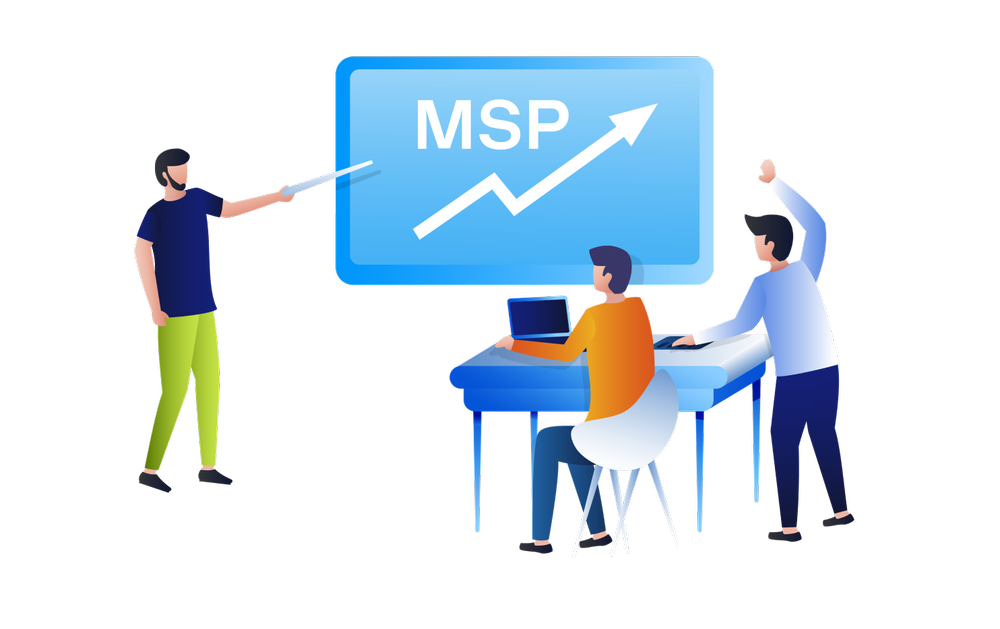
Start learning for Free
New! MSP Academy offers budding and seasoned MSP professionals vendor-neutral training covering the A-Z of managing a successful MSP business.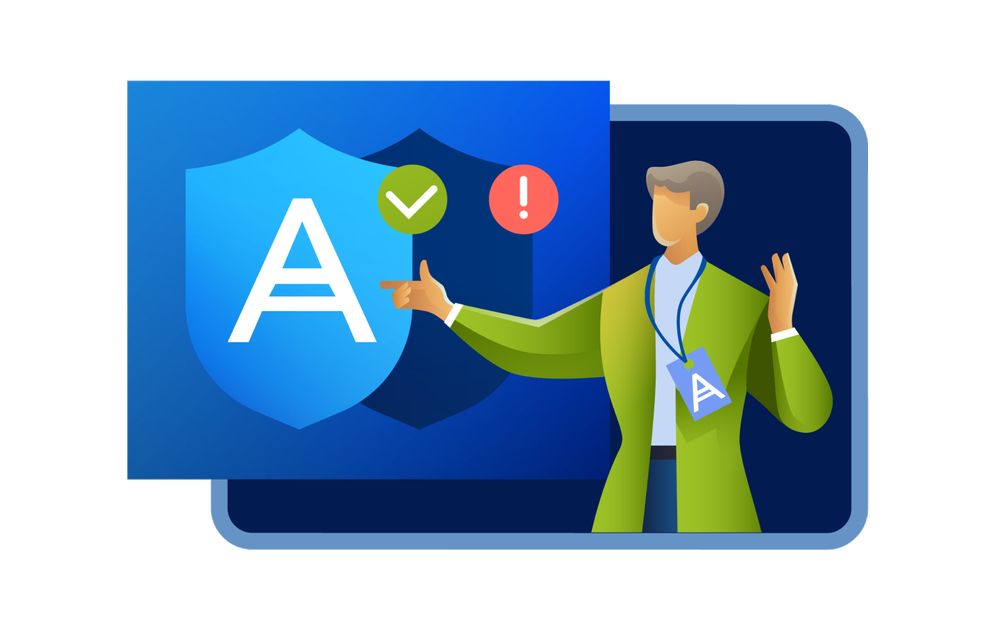
Train on-demand
Access our most popular sales and technical training courses designed for existing MSPs looking to enhance their cybersecurity skills and knowledge.
Login to Partner Portal
Available exclusively to Acronis Partners. Access our complete Acronis Academy training catalogue and earn your required certifications.
Looking for help?
Frequently Asked Questions
What’s the difference between backup and disaster recovery solutions?
Backups are simple; they are copy of your corporate systems and data that can be used to bring a failed system back online. Disaster recovery refers to a more advanced form of system copies that include processing capabilities.
What is a disaster recovery solution?
Disaster recovery solutions allow companies to quickly resume business-critical workloads after cyberattacks, natural disasters, or server failures. The disaster recovery process normally involves a separate physical or cloud site to restore data. Every disaster recovery solution aims to help businesses operate as usual. Since business continuity depends on high availability, disaster recovery strategies depend on tight RPOs and RTOs.
What goes into a disaster recovery plan?
Every business will have its own unique requirements, so a good plan will minimize the complexity of the disaster recovery process. When creating a disaster recovery plan for your clients, you will first need to assess the applications, process, and cost versus risk which will help define your approach.
What data should I back up for effective disaster recovery?
For reliable disaster recovery, you need to look beyond simply copying all of your clients’ databases and files. Their entire infrastructure – servers, PCs, NAS, SAN, hypervisors, and endpoints – contains vital production data. You’ll need to capture application settings, operating system configurations, bookmarks, and registry data for a full recovery.
Where should I back up my clients’ data to perform disaster recovery?
To be able to failover your clients’ critical workloads, you should back up the data to Acronis Cloud Storage (or cold storage for backups). As the disaster occurs, fail over your clients’ workloads to the offsite server running in the Acronis Disaster Recovery Storage (or hot storage in the Acronis Cloud).
What is MSP disaster recovery?
MSP disaster recovery is a service offered by managed service providers to clients that require a disaster recovery solution as a service (DRaaS) to ensure business continuity and client access to their data following a disaster, including a ransomware attack, hardware failure, natural disaster, or any other unplanned outage.
Do MSPs need cloud DR services?
As a managed service provider, you should consider offering a cloud disaster recovery (DR) service — also called Disaster Recovery as a Service (DRaaS) — to protect your client’s workloads, limit downtime, and shorten recovery point objectives (RPOs) in the event of unplanned outage. With DRaaS, your clients do not need to invest in additional hardware and software or IT expertise to develop, test and execute an in-house DR strategy. Instead, your organization provides the services to replicate your clients’ systems and data to a cloud infrastructure and orchestrate the failover and failback process.
Sorry, your browser is not supported.
It seems that our new website is incompatible with your current browser's version. Don’t worry, this is easily fixed! To view our complete website, simply update your browser now or continue anyway.

